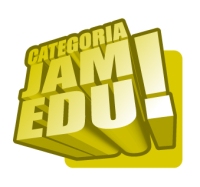Creationist Indiana state Sen. Dennis Kruse wants students in Indiana schools to demand scientific evidence for anything they doubt. His stated intent is to get Creationism into the classroom, along with Global Warming denial. But what happens when the students demand evidence for Creationism?
After creationism bill failed, Indiana senator will push ‘truth in education’ measure
I find Creationists endlessly fascinating and endlessly amusing. I collect instances of how much science they have to deny and claim to be part of the conspiracy against Jesus in how many areas. I summarized my findings on my education blog the last time a Creationism-in-the-schools bill was proposed in Indiana.
I wrote to the Indianapolis Star newspaper to express my feelings on hearing of this proposal. An edited version of the letter below appeared in the paper yesterday, and was well received, except of course by the wacko Creationist commentator who totally missed the point.
Also published on Daily Kos.
As a reality-based educator working with the One Laptop Per Child program worldwide, I must applaud Rep. Dennis Kruse’s misguided attempt to bring Creationism into the classroom by demanding critical thinking of students. (“After creationism bill failed, Indiana senator will push ‘truth in education’ measure”) Sen. Kruse’s bill proposes that any student will be able to challenge any scientific statement made in a classroom, and demand evidence for it.
“If a student thinks something isn’t true, then they can question the teacher and the teacher would have to come up with some kind of research to support that what they are teaching is true or not true.”
I am delighted at the thought of Hoosier schoolchildren demanding research papers from Creationist schoolteachers or fellow students. I even prepared a list of questions that they can use.
I didn’t know that they would come in handy this time. I was merely laughing at the last Indiana legislator to try this on, and at his willfully ignorant supporters.
I have amused myself over the years by collecting statements by Creationists about how much science, how much geology, biology, physics, chemistry, astronomy, cosmology, and so on they have to deny in order to maintain their fundamentally unChristian beliefs. The last time Indiana was considering allowing Creationism into the classroom, I wrote up a summary in my education blog, https://replacingtextbooks.wordpress.com/2012/02/01/creation-science-in-indiana/ “Creation Science” in Indiana
It warms my heart to think of little children asking for the research proving that Quantum Mechanics does not work inside the sun, so that it has not been fusing hydrogen to helium and thus shining for billions of years, or the explanation for being able to see stars and galaxies so far away that their light has taken millions, even billions of years to get to us, and how it is that we have more than 10,000 annual layers in deep ice cores from Greenland and Antarctica. For starters.
I have a million of them.
Perhaps Sen. Kruse supposes that because all Global Warming models are wrong, that this disposes of the entire theory, and all the facts about warmer, more acid, rising oceans; about melting glaciers, permafrost, and sea ice; and about warmer air, with more and bigger storms that cause worse flooding because the ocean starts off a foot higher, and with more and worse droughts.
Yes. I said that all of the Global Warming models are wrong. They are all wrong. Global Warming is worse than any of them predicted. The errors in our understanding of such a complex system as the global climate do not mean that warming is a figment of scientists’ imaginations, or “the Kool-aid of the left wing Liberal conspiracy” as some would have it. It means that we missed some kind of feedback that is resulting in more warming, more melting, more acid ocean water, more dying corals, and more of all the rest.
You want evidence? How high do you want it piled?
Perhaps Sen. Kruse is unaware that we have a century and a half of research on Natural Selection, genetics, and molecular biology to back up the facts, already evident before Charles Darwin, of evolution.
Again, how high would he like the evidence piled? And what does he have on his side?
Any other questions?








